Latest Posts

Defeating Giant Movie Monsters Using Mathematical Modeling
The predator-prey equation can predict how we’d fare in a monster invasion, as well as real-world biology and ecology scenarios like shark overpopulation and tumor movement.

Happy Birthday, Joseph Keller
Mathematician Joseph Keller is best known for his geometrical theory of diffraction, but he also pursued other areas of study, even developing a teapot spout that doesn’t spill.

Samsung Amps Up Loudspeaker Designs with Simulation
Some organizations reach success and then shift the goal post. Take Samsung, for instance: Although they lead the market for televisions and smartphones, they set their eyes on another goal…
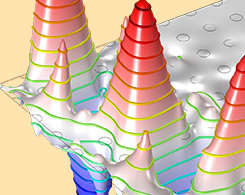
Engineering the Flow of Light Using Photonic Crystals
Did you know that the discovery of photonic crystals in 1980 came about because of an attempt to reduce the losses in semiconductor lasers in a specific frequency range?

Happy Birthday, Friedrich Bessel
Friedrich Bessel could have led a comfortable life had he stayed in his career at a commercial firm. Instead, he was inspired to study astronomy, physics, and planetary behavior and movement…

5 Facts for 50 Years: The Apollo 11 Lunar Landing
Think you know everything about the Apollo 11 mission? We go over 5 fun facts about the landmark aeronautical event in celebration of the 50-year anniversary.

Recursion and Recursively Defined Geometry Objects
Broadband antennas and metamaterials are 2 fields of engineering in which recursively defined geometry objects are a useful modeling capability. Writing methods makes this task easier.
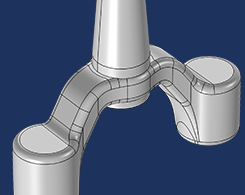
How to Automatically Remove Small Details in Your Model Geometry
Have you ever wished for an automatic way to remove small details in your model geometry that are causing an unnecessarily fine mesh or a poor mesh quality? Enter the Remove Details operation.

Optimizing Lubricated Systems with Numerical Simulation
Experts at SIMTEC designed a lubricated mechanical contact using numerical modeling and built an application for optimizing the use of lubrication in rolling and sliding bearings.
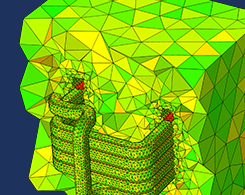
Best Practices for Meshing Domains with Different Size Settings
Tip 1: Choose the order of your meshing sequence operations. Tip 2: Use a single operation to mesh multiple domains. Keep reading to learn how to ensure the high-quality meshing of model domains.
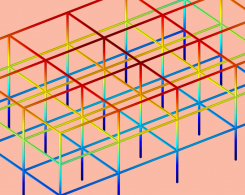
Predicting the Unpredictable: Simulating Earthquake Mechanics
In case of an earthquake, people regularly practice hiding under their desks. Another way to prepare? Using response spectrum analysis to determine the structural stability of a building subject to this type of seismic event.

What Do Lobster Shells Have to Do with Body Armor?
Believe it or not, lobster are potentially paving the way for innovations in body armor and soft robotics due to the unique properties of the translucent membrane on the underside of their tails.

Happy Birthday, Maria Goeppert Mayer
2, 8, 20, 28, 50, 82, and 126 were the “magic numbers” that led Maria Goeppert Mayer to develop the first mathematical model for nuclear shells in an atom.
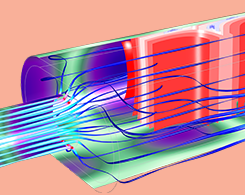
How to Automate Meshing in Frequency Bands for Acoustic Simulations
There is a large frequency range involved in acoustics phenomena, which means that modeling acoustics problems requires meshing a large wavelength range. COMSOL® offers an efficient way to do so.

Analyzing Vibrations in Rotating Machinery Due to Bearing Misalignment
You can use structural analysis to compare the angular velocity, axial displacement, and bearing reaction moment on the shaft for rotating machinery with aligned and misaligned bearings.

Automatic Time Step and Order Selection in Time-Dependent Problems
Here’s an intro to the time-dependent solver log in COMSOL Multiphysics® and an in-depth look at the theory behind discrete time-stepping schemes and optimal time steps and discretization orders.
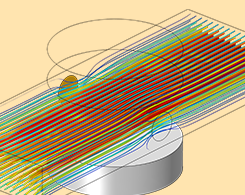
Building a Magnetohydrodynamic Multiphysics Model in COMSOL®
Magnetohydrodynamic models call for fluid dynamics and electromagnetics couplings. To do so, you can set up bidirectional couplings between all physics equations or building a simplified model.

Using Simulation Software in the Courtroom
Simulation is inherently a representation of reality. In court, lawyers establish what did or did not happen in reality and why. So what happens when simulation software is used in a legal case?
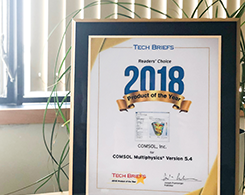
COMSOL Multiphysics® Version 5.4 Named 2018 Product of the Year
We’re raising a glass in celebration: Tech Briefs magazine presented COMSOL with a 2018 Readers’ Choice Product of the Year award for COMSOL Multiphysics® version 5.4 and COMSOL Compiler™.

Happy Birthday, James Clerk Maxwell
Maxwell’s equations, which describe how electric and magnetic fields behave and interact, revolutionized electromagnetics. Did you know that James Clerk Maxwell also took the first color photo?
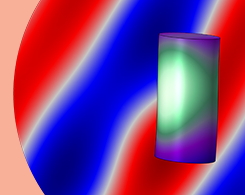
Introduction to Modeling Acoustic-Structure Interactions in COMSOL®
To model an ASI problem, you need to account for the behavior of elastic waves in solids, pressure waves in fluids, and their interaction. The COMSOL® software includes interfaces for doing so.
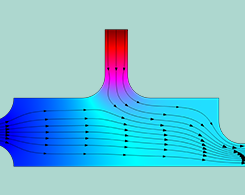
Optimizing PID Controller Performance with COMSOL Multiphysics®
PID controllers involve three components that must work together simultaneously, and it can be challenging to get each of them just right. That’s where process control simulation comes in.
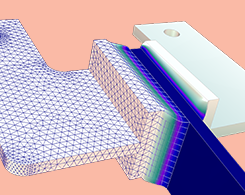
Frequency Response of Mechanical Systems
Read this blog post for a detailed look at damped mechanical systems, a guide to setting up frequency-response analyses in COMSOL®, and a discussion of how to interpret your results.

Efficient Parameter Control and Usage in COMSOL Multiphysics®
Any model can benefit from a proper parameter list. Learn how to control and use model parameters more efficiently with features such as parameter nodes and forms.
